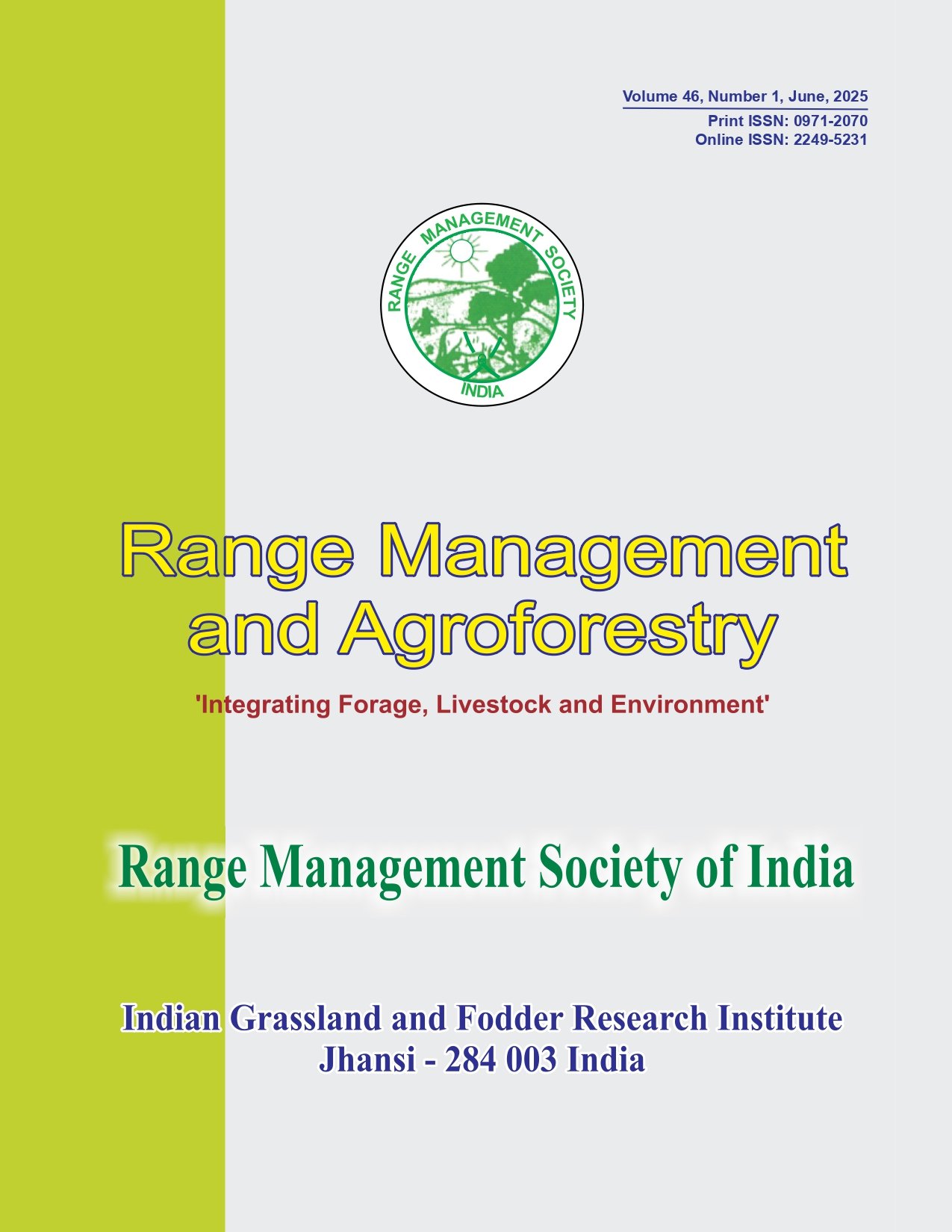Evaluation of cactus pear (Opuntia ficus-indica) accessions for various growth characteristics under arid region of north western India
Keywords:
Cactus pear, Fodder resource, Range lands, YieldAbstract
Dry lands are characterised by high variability in the intensity and amounts of rainfall and occurrence of frequent and prolonged periods of droughts. Scarcity of fodder for animals and migration are common in these ecosystems. Twenty nine accessions of cactus pear (Opuntia ficus-indica) were imported through International Centre for Agricultural Research in the Dry Areas, South Asia and China Regional Program, India and one promising local spineless accession was collected from Kachchh area. These accessions were evaluated during 2013-2015, for performance under Indian arid conditions for growth and productivity for use as fodder resource. Different accessions varied significantly with respect to various growth characteristics and yield. After one year of growth in field, different accessions of cactus pear produced 2 to 21 cladodes per plant and aboveground biomass of 0.59 to 3.15 kg plant-1. The cactus pear can serve as a potential fodder crop for rehabilitation of degraded arid lands by providing green fodder throughout the year.




